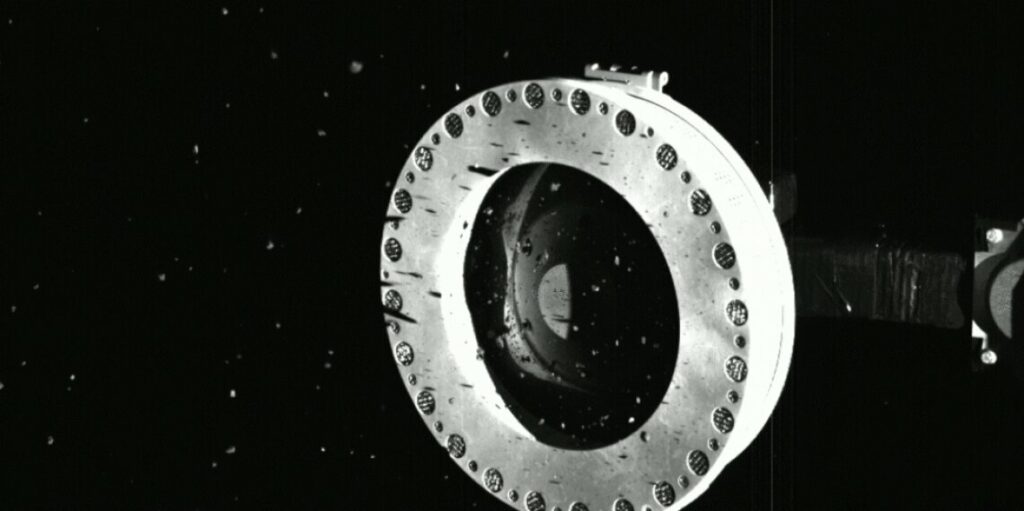Two days ago, NASA’s OSIRIS-REx mission landed on and sampled an asteroid barreling through space. We now have confirmation that the craft retrieved enough material for the mission to be considered a success — in fact, it may have sampled a bit too much.

OSIRIS-REx‘s target was to bring back home at least 2 ounces (60 grams) of material from the asteroid’s surface. One of the ways NASA planned to check if this was met was to weigh the sample over the coming few weeks by spinning the spacecraft around (there’s no gravity out there, so we have to simulate it). However, images beamed back by the probe show that enough material has been recovered.
A handful of dirt
The craft’s Touch-And-Go Sample Acquisition Mechanism, or TAGSAM, which was tasked with actually retrieving the asteroid sample, appeared to be full of particles, according to ground control. It’s actually overflowing to an extent, as the mylar flap which acts as a lid for the collector is wedged slightly open by larger rocks in the sample.
Right now, they’re working on stowing the sample as quickly as possible to avoid losing material into space. They fear that any additional movement of the instrument or the craft as a whole could dislodge additional dust, or otherwise lead to further loss of the sample.
“Although we may have to move more quickly to stow the sample, it’s not a bad problem to have. We are so excited to see what appears to be an abundant sample that will inspire science for decades beyond this historic moment,” said Thomas Zurbuchen, NASA’s associate administrator for science at the agency’s headquarters in Washington, D.C.
In order to preserve the sample, NASA decided to not start measuring the sample’s mass (which included a braking burn on Friday) as was originally planned. Instead, they will focus on transferring it to the return capsule, where any loose material will be kept safe.






